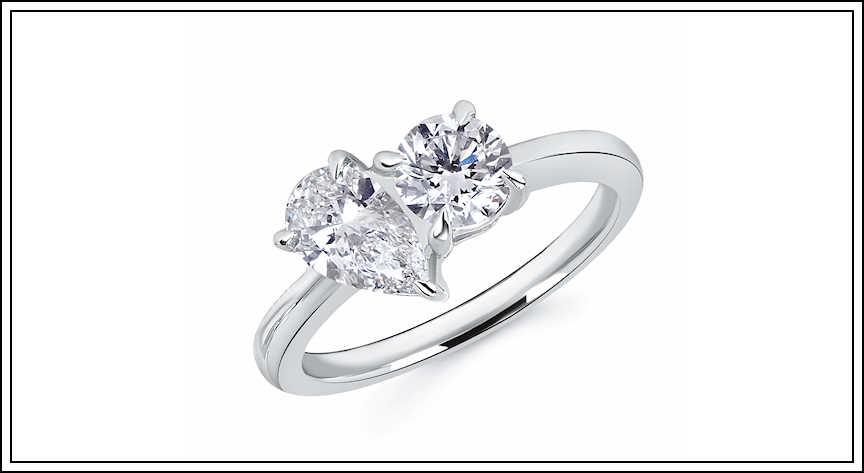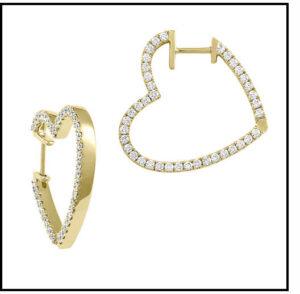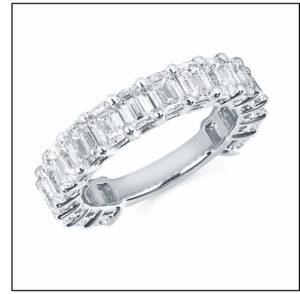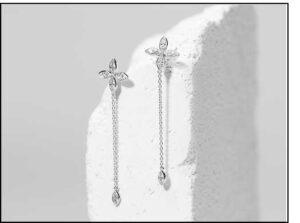Can We Talk? The Lab-Grown Diamond Conversation is Changing
Consumers are fully, abundantly aware that lab-grown diamonds are an option for engagement rings and beyond.
As of last fall, jewelry with lab-grown diamonds comprised around 10% of U.S. diamond engagement ring sales, according to data provided by industry analyst Edahn Golan at Facets 2022, the recent conference held by Antwerp World Diamond Centre.
The product is readily available, heavily marketed, and a quick Google search can answer a consumer’s most pressing concerns in a nanosecond.
You may have observed that clients are more clued-in, curious and generally into the idea of lab-grown in your own dealings with them of late.
“The conversation retailers are having today has evolved dramatically over the past couple of years, from early education centered on confirming that lab grown diamonds are just as ‘real’ as earth mined diamonds, to now spotlighting the added values and benefits of the category,” says Brittany Lewis, chief marketing officer at WD Lab-Grown Diamonds.
“Language is important,” says Monica McDaniel, VP of marketing at Chatham. “Consumers value a knowledgeable salesperson and expect authentic guidance when making a jewelry purchase. We believe that the only two terms that should be used at the store level when speaking with consumers about both options are laboratory-grown and earth-mined. This puts emphasis on the environment in which they grow, rather than what they are. At the end of the day, they are both crystallized carbon.”
At Frederick Goldman, which owns the lab-grown diamond brand Love Earth, the team is focused on four key messaging pillars: Better Value. More Diamond. Unparalleled Beauty. Sustainable & Conflict Free. A compelling line from its marketing materials reads: Laboratory conditions leave nothing to chance. So, our lab created diamonds will always possess great color and incredible sparkle.
Getting more, or better quality for less, has become yet another important talking point for many in the lab-grown diamond sector. There’s no reason to downplay the facts: With lab-grown diamonds, you can purchase a larger diamond, of much higher quality, at the same starting budget.
“Alternatively, if you come in under budget by purchasing a lab grown diamond, for those planning their honeymoon, you may spend those savings on a once-in-a-lifetime travel or dining experience, or simply a matching pair of diamond studs to wear on the wedding day and beyond,” notes Lewis at WD.
In other words, retailers might consider working this angle: “Extend that celebration and commemoration of your love to mark all of life’s most meaningful moments with diamonds.”
Many conversations about lab-grown diamonds at the retail counter naturally lead to the topic of sustainability. In addition to affordability, Continental/Novell Global “has responded to this trend by gathering feedback from retailers to understand the market,” says Rick Mulholland. “Sustainability, traceability, affordability, and eco-friendliness are the key selling points of lab-grown diamonds, making them a popular choice for consumers seeking environmentally responsible options, especially for larger stone sizes.”
Beyond this, IDD suggests emphasizing how the product can be a vehicle for self-expression and creating a sense of individuality. “The focus should be less about price and more about design, style and taste,” says Brad Campbell, chief partnership officer.
But one big issue for a lot of retailers remains: the fact that lab-grown diamonds have no resale value. “I would agree, but most companies do not give full value on trade-ins in any industry,” says Theresa Namie, merchandise manager at Ostbye. “Lab-grown diamonds need to be sold on the sparkle that will last forever just like a mined diamond.”
In fact, the idea that there are two camps at the retail level—one that’s staunchly in support of mined and another that’s all about lab-grown—is starting to fade from reality. “When talking with customers I think it is best to offer both options and let the customer make the decision based off their needs and feelings about the product,” she says.
McDaniel agrees: “Our focus should be on connecting emotion to the beautiful products we are selling. Jewelry, no matter if it’s lab-grown or earth-mined, is the touchstone of life. Sell the quality of the stones and the craftsmanship of the piece, sell the uniqueness of the design, and most importantly, sell the story. This will undoubtedly help grow our business which benefits us all.
“What some retailers don’t seem to understand, is that both lab-grown and earth-mined diamonds can and should coexist. By offering clients a full spectrum of options, it gives them the peace of mind to make an educated choice, which increases the closing ratio across all products. This isn’t a theory. It has been proven by those who embrace choice.”











